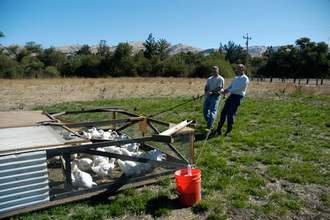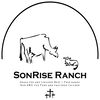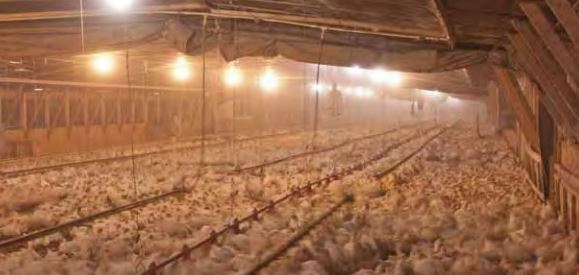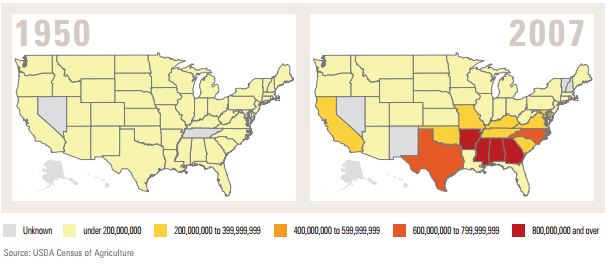- More Chickens but fewer farms - in 50 years, chicken production has increased 1400%, while farms that raise chickens has decreased 98%., thus increasing chicken production density by a staggering number, as you might imagine this means overcrowding. Compare the photo above with the video below and ask yourself; which animal is healther?
- Average conventional (even certified organic) chicken comes from a mega-farm that produces up to 605,000 birds annually
- The wages for such production have plummited. Fifty years ago, one could make a decent middle income wage from chicken farming. Not today, the average chicken farmer is a slave to the big producers
Tyson foods, one of the larger chicken producers in the US recently announced that they would stop using antibiotics used in humans – but the damage may have already been done. Currently 25 million pounds of antibiotics are used in animal product annually.
When you eat meat treated with antibiotics, you not only eat the antibiotic but the bacteria too, in fact 22% of all antibiotic resistant cases are related to food borne illnesses.
 A SonRise Ranch Chicken Tractor in action. Each day, it is moved forward to give the chickens inside access to a fresh patch of green grass.
A SonRise Ranch Chicken Tractor in action. Each day, it is moved forward to give the chickens inside access to a fresh patch of green grass.
Secondly, we don’t use antibiotics – period. This is pretty simple. Outdoor chickens don’t get sick because they are exposed to the elements and nature. They are very well adapted to “roughing” it and the last thing we want is to bring them in out of the sunlight and away from green grass, bugs and dirt. Thus we have no need of medicine for them. Our biggest worry is predators, which we mitigate with well build tractors the chickens occupy at night.
In our next installment we will look at bacteria, chicken waste and the fate of over 200 million chicks annually the system deems unmarketable.
Stay tuned.



 RSS Feed
RSS Feed